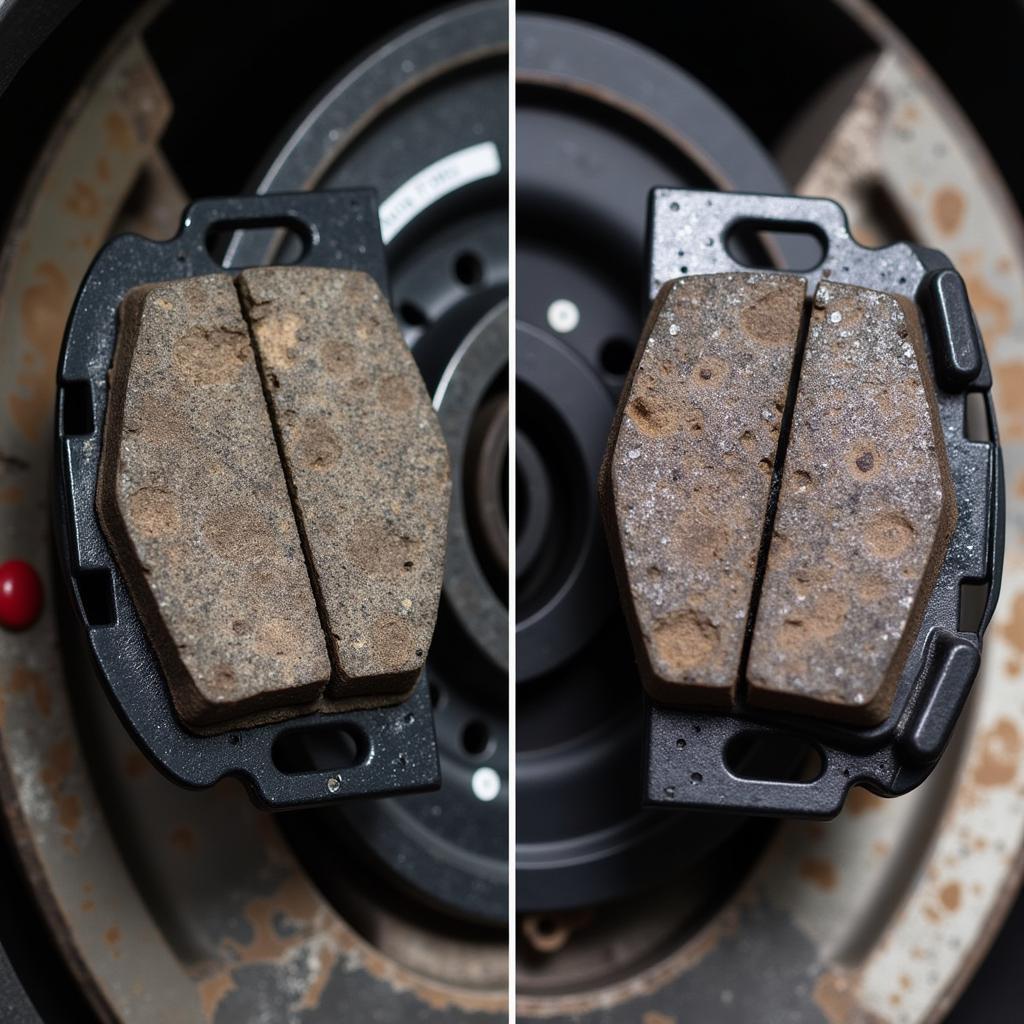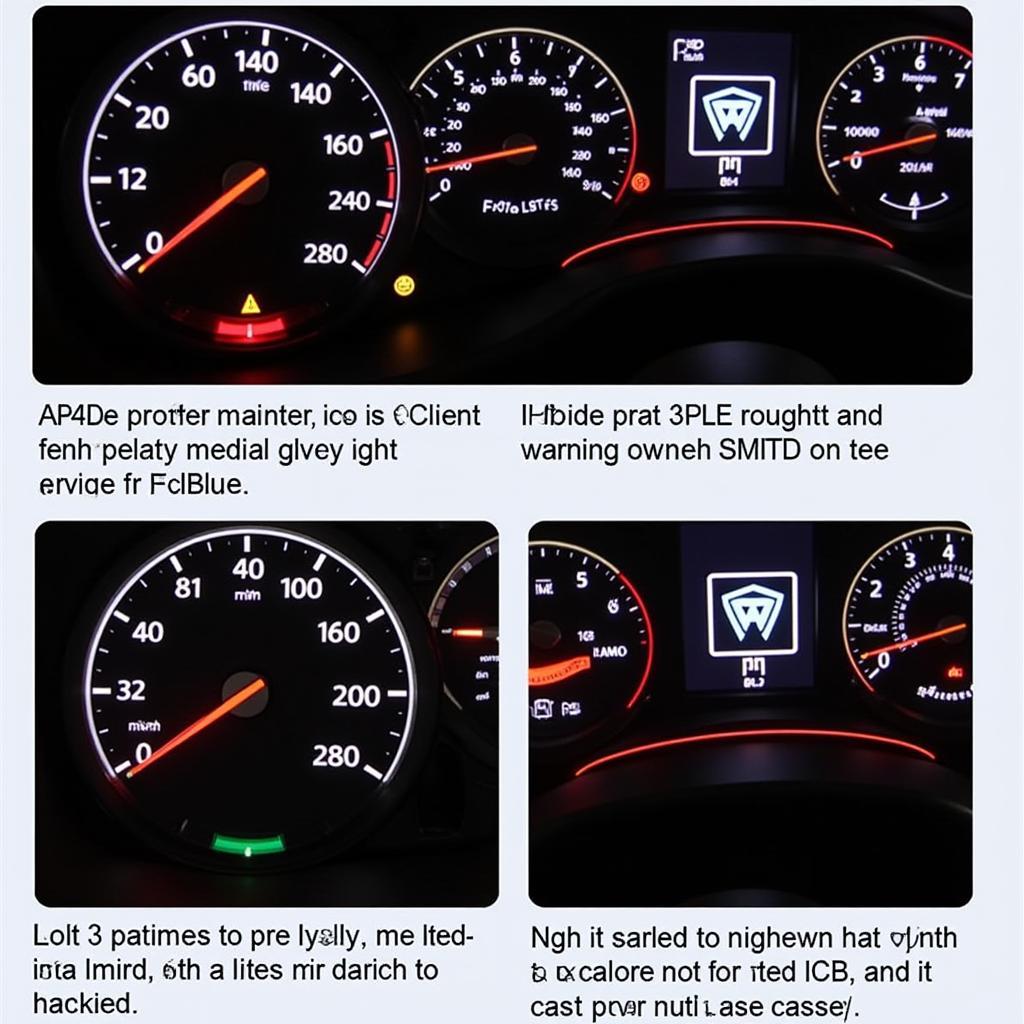The dreaded seat leon oil service warning has popped up on your dashboard. Don’t panic! This guide will walk you through understanding and addressing this warning light, from simple checks to more advanced diagnostic solutions. We’ll cover everything from resetting the oil service light to tackling potential underlying issues.
Understanding the oil service warning is crucial for maintaining your Seat Leon’s performance and longevity. While it might seem like a simple reminder, ignoring it can lead to significant engine damage down the road. This warning isn’t just about the oil itself, but also the overall health of your engine’s lubrication system.
After a simple oil change, many drivers find themselves faced with the persistent oil service warning. This can be frustrating, but it’s often a simple fix involving resetting the service indicator. Different Seat Leon models may have slightly different reset procedures, so it’s crucial to consult your owner’s manual for the specific steps. However, a common method involves using the steering wheel buttons and the instrument cluster menu to navigate and reset the service interval. Sometimes, a diagnostic tool might be required to clear the warning, especially for more persistent issues.
Diagnosing the Seat Leon Oil Service Warning
Sometimes, the oil service warning light signifies more than just a routine service interval. It could indicate low oil pressure, a faulty oil sensor, or other problems within the lubrication system. If the warning light comes on unexpectedly or flickers while driving, it’s crucial to investigate further.
Check your oil level using the dipstick. If it’s low, top it up to the recommended level. However, if you frequently need to add oil, you might have an oil leak that requires professional attention. Another possibility is a faulty oil pressure sensor, which can trigger the warning light even if the oil level and pressure are fine. In such cases, diagnostic tools become essential. These tools can read the sensor data and pinpoint the exact problem.
If you’re comfortable with basic car maintenance, you can perform some preliminary checks. Inspect the oil filter for leaks or damage. A clogged filter can restrict oil flow and trigger the warning light. If you’ve recently changed your oil, ensure you used the correct oil type and filter specified for your Seat Leon model. Using the wrong oil can also lead to performance issues and trigger warnings. More complex issues, like a failing oil pump, will require the expertise of a qualified mechanic.
Resetting the Oil Service Light on Your Seat Leon
Resetting the oil service light after an oil change or service can sometimes be tricky. Each Seat Leon model might have a slightly different procedure, and not following the correct steps can leave the warning light stubbornly illuminated. If you’re unsure about the process, it’s always best to consult your owner’s manual. See our guide on Seat Leon dashboard warning light symbols for a quick overview. You might also find helpful information about engine warnings in our article on Seat engine warning symbols.
The process typically involves a combination of button presses on the steering wheel and navigation through the instrument cluster menu. In some cases, you might need a diagnostic tool to reset the light, especially if the warning is related to a specific fault code.
When to Seek Professional Help
While some issues related to the oil service warning can be addressed with simple DIY fixes, others require professional attention. If you’ve checked the oil level, reset the service indicator, and the warning light persists, it’s time to consult a qualified mechanic. Don’t hesitate to seek professional help if you notice any unusual engine noises, performance issues, or if the warning light flickers intermittently. If your Seat Leon’s engine warning light is flashing, check out our dedicated guide. You might also find relevant information about engine warning lights in our Seat Leon Cupra engine warning light guide.
Persistent oil service warnings could indicate more serious issues like a failing oil pump, blocked oil passages, or internal engine damage. Ignoring these warnings can lead to costly repairs and even engine failure.
 Checking oil pressure gauge in a Seat Leon
Checking oil pressure gauge in a Seat Leon
Conclusion
Addressing the seat leon oil service warning promptly is essential for maintaining your vehicle’s health and preventing costly repairs. While a simple reset might be all that’s needed, a persistent warning requires further investigation. By understanding the potential causes and taking appropriate action, you can keep your Seat Leon running smoothly for years to come. Don’t ignore the warning—address it today! For information regarding temperature warning lights, see our guide on Seat Leon temperature warning light flashing.
FAQ
- What does the seat leon oil service warning mean? It typically indicates that your car is due for an oil change or that there might be an issue with the oil system.
- How do I reset the seat leon oil service warning? The procedure varies depending on the model year, so consult your owner’s manual. It usually involves a combination of button presses on the steering wheel and navigation through the instrument cluster menu.
- Can I drive with the seat leon oil service warning light on? If the light is on steadily, you should check your oil level and consider getting an oil change soon. If the light is flashing, it indicates a more serious problem, and you should stop driving immediately and seek professional help.
- What if the light stays on after an oil change? Try resetting the oil service indicator. If it still stays on, there might be a problem with the oil sensor or another issue with the oil system.
- How often should I change my Seat Leon’s oil? Refer to your owner’s manual for the recommended oil change interval.
- What type of oil should I use in my Seat Leon? Consult your owner’s manual for the recommended oil type and viscosity.
- What could cause the seat leon oil service warning light to come on besides needing an oil change? Low oil pressure, a faulty oil pressure sensor, a clogged oil filter, or a failing oil pump can also trigger the warning light.


